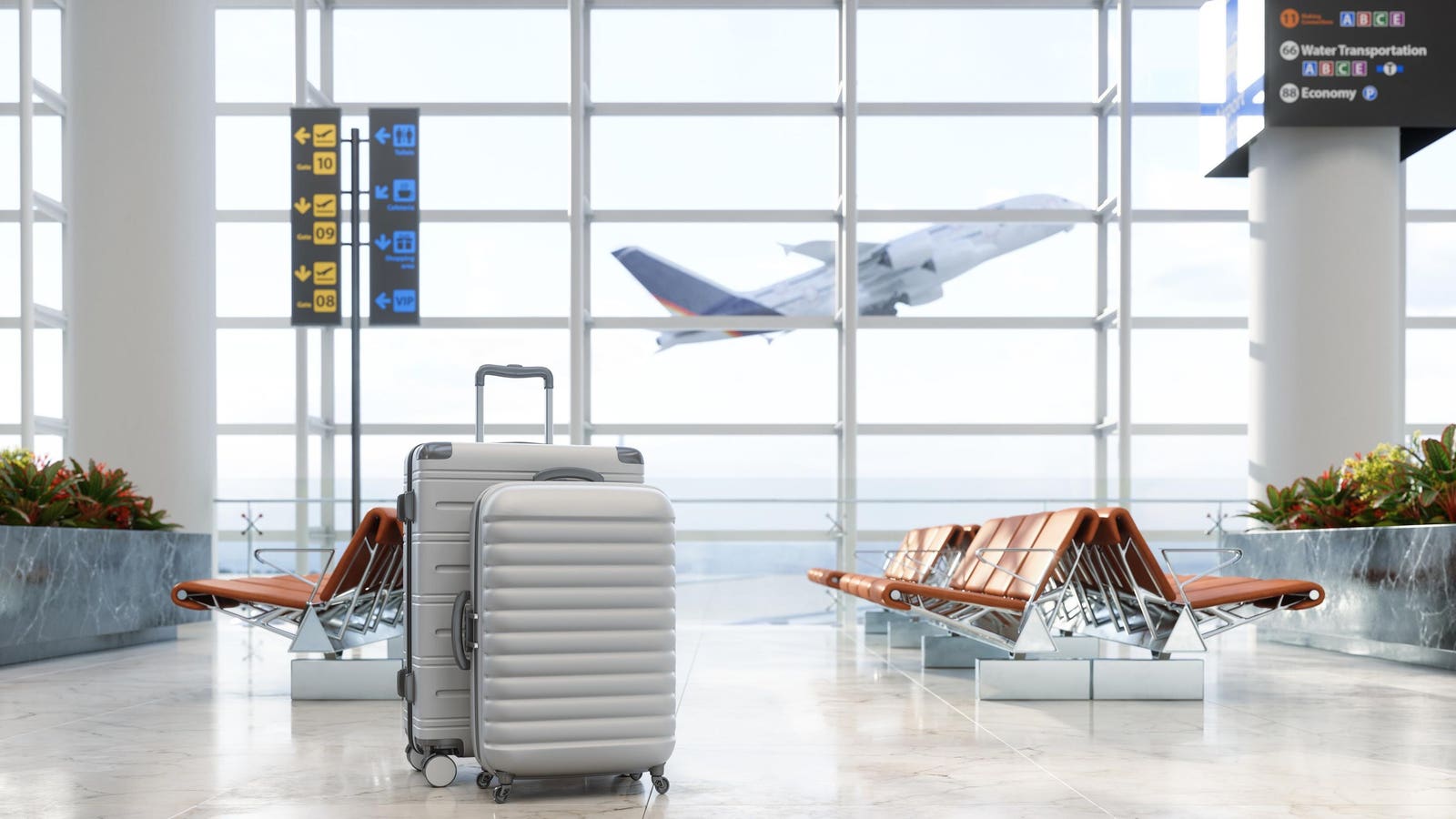A new report ranks the best airports in the U.S. and Canada.
getty
More people are flying than ever before, and passengers are demanding more from their airport experience than ever. So what are the best airports in the U.S. and Canada right now? The latest J.D. Power 2025 North America Airport Satisfaction Study has the answers, along with the big trends driving the airport experience.
What makes this airport report so unique? “J.D. Power is an independent research firm and conducts each survey without influence from any airport being evaluated nor with any influence from industry associations,” Michael Taylor, senior managing director of travel, hospitality, retail and customer service at J.D. Power, told me in an interview.
The new report is based on 30,439 surveys from U.S. or Canadian residents who traveled through at least one U.S. or Canadian airport between July 2024 and July 2025. The ranking is based on seven factors: ease of travel through the airport, level of trust with the airport, terminal facilities, airport staff, departure/to airport experience, food, beverage and retail, and arrival/from airport experience. Each airport is rated on a 1,000-point scale.
I’ve been following this report since 2022, and what stands out is how the findings have evolved. For years, airport satisfaction lagged as crowds grew and construction snarled terminals. But the trend is shifting. With billions of dollars in projects finally wrapping up, airports are seeing measurable gains in satisfaction and passengers are rewarding those improvements.
“The biggest change in the past 25 years is the improvement to the airport industry’s food, beverage and retail offerings,” says Taylor. “We’ve gone from bare bones coffee and quick service restaurants to micro-branded coffee and local gourmet offerings at many airports across North America.”
The Best Airports In 2025
This year’s study ranks airports in three categories: Mega, Large and Medium. Mega Airports are defined as those with 33 million or more passengers per year. Large Airports have 10 to 32.9 million passengers per year. Medium Airports have 4.5 to 9.9 million passengers per year.
Minneapolis-Saint Paul International Airport—the best Mega airport inAmerica.
getty
For the second year in a row, the winner of the Mega Airports category is Minneapolis-Saint Paul International Airport, which scored 660 thanks to its “great signage, easy navigation and a great food/beverage/retail environment,” says Taylor.
Like last year, Detroit Metropolitan Wayne County Airport (649) and Phoenix Sky Harbor International Airport (634) follow closely behind.
In the Large Airport category, John Wayne Airport in California’s Orange County ranks highest for the second year in a row with a score of 730. Taylor says it “caters to the car culture of Southern California with easy parking right next to the terminal.” Another winning feature: “easy navigation of the terminal.”
Tampa International Airport (709) and Dallas Love Field (705) round out the top three.
In the Medium Airport category, Indianapolis International Airport takes the win for the fourth year in a row with a score of 713. “Extraordinary access with two major highways running alongside the airport, great terminal design, really kicked up their food/beverage/retail program to hold on to the top spot,” says Taylor.
Ontario International Airport (709) and Buffalo Niagara International Airport (698) round out the list of the top three performers.
The Airports That Didn’t Make The Grade
Newark Liberty International Airport in New Jersey is the lowest-ranking Mega airport once again, with a score of 565. The airport also finished last in 2024, 2023 and 2022. Access and road traffic remain its biggest challenges, overshadowing the impressive design and dining options in its newest terminal.
Newark Liberty Airport—the lowest ranked Mega airport in America. Pictured here: the new Terminal A.
getty
At the bottom of the Large Airports list: Philadelphia International Airport with a score of 570. Taylor says the airport is “in dire need of a new terminal design and simply can’t handle the demand and crowding it experiences today.”
For Medium Airports, Canada’s Edmonton International Airport comes in last with a score of 602. According to Taylor, it “needs to add some excitement to the airport” as it’s “a little hard to get to.”
Airport Trends To Watch
The J.D. Power report also tracks trends. Taylor points out that the most dramatic improvements are tied to terminal overhauls. “Not really surprising, but the number of Large airports improving over this year was impressive. Mostly these improvements involved finishing upgrades and other construction projects,” he says.
Several airports have reinvented themselves entirely. “LaGuardia, Indianapolis and Kansas City are very good examples of airport success stories. Moving from depressing, poorly maintained facilities to sparkling new designs that excite passengers. Instead of being mazes for rats, they’ve become arrival spaces for gods (so to speak),” says Taylor.
But for the largest hubs, geography is often the enemy. “Many Mega airports are located in land-locked spaces that you would never consider if you were building an airport today,” Taylor explains. “The land constraints often hold back or prevent improvement projects. The main strategy that seems to work for Mega airports is to not simply build on to the end of current buildings but start with something of a green field. It may cost more, but you want to future-proof your airport as aviation goes into the future.”
Portland International Airport (PDX) is praised for its wood décor and local food and beverage outlets, which help create a strong sense of place.
getty
He also highlights airports that lean into their location, including Oregon’s Portland International Airport (PDX) (“because of its wood décor and local food/beverage outlets”), Albuquerque (“because of its artwork and desert color scheme) and Las Vegas (“because its in-terminal gambling/slot machines”). Airports that weave in authentic local touches, he adds, see significantly higher satisfaction scores.
Passenger spending is another important trend. The study found that travelers who rated their airport experience as “perfect” spent an average of $42.39 in the terminal—nearly $17 more than those who said it was “just OK.” That connection between satisfaction and revenue underscores why airports are investing heavily in upgrades.
The bottom line: With more travelers than ever passing through North American airports, the pressure is on to deliver a smoother, more enjoyable journey. The best airports in the U.S. and Canada are proving it can be done, thanks to smart design, local flavor, and major investment in facilities. But as Taylor points out, billions more in projects are still in the pipeline, and that means the rankings could look very different in the years ahead.
Read on to see J.D. Power’s rankings of the best airports in America.
Minneapolis Saint Paul International Airport’s central concourse.
getty
Best Mega Airports
Here is J.D. Power’s ranking of Mega Airports. Mega Airports are defined as those with 33 million or more passengers per year. Ratings are based on a 1,000 point scale.
1. Minneapolis-Saint Paul International Airport (660)
2. Detroit Metropolitan Wayne County Airport (649)
3. Phoenix Sky Harbor International Airport (634)
4. Dallas/Fort Worth International Airport (620)
5. Harry Reid International Airport (619)
6. John F. Kennedy International Airport (618)—tie
6. Orlando International Airport (618)—tie
8. Miami International Airport (615)
9. San Francisco International Airport (613)
10. Boston Logan International Airport (608)
11. Fort Lauderdale-Hollywood International Airport (606)—tie
11. George Bush Intercontinental Airport (606)—tie
13. Denver International Airport (603)
14. Hartsfield-Jackson Atlanta International Airport (596)
15. Los Angeles International Airport (590)
16. O’Hare International Airport (589)
17. Seattle-Tacoma International Airport (586)
18. Charlotte Douglas International Airport (583)
19. Toronto Pearson International Airport (567)
20. Newark Liberty International Airport (565)
An American Airlines aircraft approaches for landing at John Wayne Airport.
getty
Best Large Airports
Here is J.D. Power’s ranking of Large Airports. Large Airports are defined as those with 10 to 32.9 million passengers per year. Ratings are based on a 1,000 point scale.
1. John Wayne Airport, Orange County (730)
2. Tampa International Airport (709)
3. Dallas Love Field (705)
4. Kansas City International Airport (691)
5. Raleigh-Durham International Airport (688)
6. Portland International Airport (683)
7. Nashville International Airport (676)
8. Vancouver International Airport (671)
9. Salt Lake City International Airport (665)
10. Louis Armstrong New Orleans International Airport (664)
11. Sacramento International Airport (662)
12. Baltimore-Washington International Thurgood Marshall Airport (650)—tie
12. San Antonio International Airport (650)—tie
12. San Jose International Airport (650)—tie
15. San Diego International Airport (645)
16. Austin-Bergstrom International Airport (644)
17. William P. Hobby Airport (643)—tie
17. LaGuardia Airport (643)—tie
19. Chicago Midway International Airport (637)
20. Ronald Reagan Washington National Airport (631)
21. Oakland International Airport (623)
22. Honolulu International Airport (618)
23. Washington Dulles International Airport (617)
24. Calgary International Airport (612)
25. St. Louis Lambert International Airport (610)
26. Montréal-Pierre Elliott Trudeau International Airport (602)
27. Philadelphia International Airport (570)
Indianapolis International Airport—the best Medium aiport in America.
getty
Best Medium Airports
Here is J.D. Power’s ranking of Medium Airports. Medium Airports are defined as those with 4.5 to 9.9 million passengers per year. Ratings are based on a 1,000 point scale.
1. Indianapolis International Airport (713)
2. Ontario International Airport (709)
3. Buffalo Niagara International Airport (698)
4. Jacksonville International Airport (695)
5. Palm Beach International Airport (688)
6. Milwaukee Mitchell International Airport (685)
7. Southwest Florida International Airport (683)
8. Bradley International Airport (675)
9. Hollywood Burbank Airport (663)
10. Cincinnati/Northern Kentucky International Airport (660)
11. John Glenn Columbus International Airport (656)
12. Pittsburgh International Airport (639)—tie
12. Albuquerque International Sunport (639)—tie
14. Kahului Airport (627)
15. Eppley Airfield (626)
16. Ottawa/Macdonald-Cartier International Airport (618)
17. Cleveland Hopkins International Airport (614)
18. Edmonton International Airport (602)
MORE FROM FORBES:








